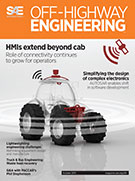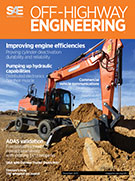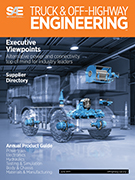Magazine

SAE Truck & Off-Highway Engineering: October 2018
2018-10-01
Quotes from COMVEC 2018 Industry leaders spoke extensively about all things autonomous-ADAS, big data, connectivity, cybersecurity, machine learning-at the annual SAE event. Here's some of what they had to say. Fuel-cell Class 8-take 2.0 With a longer-range and more-refined fuel cell-powered heavy-duty truck, Toyota aims to eventually eliminate emissions from trucks serving increasingly congested California ports. ...Editorial Bring innovation, disruption in-house Adding 3D printing to design, manufacturing processes Upstream devoted to truck cybersecurity threats Jacobs employs cylinder deactivation in HD engines to lower CO2, NOx Emissions reductions continue to disrupt CV industry Mercedes doubles down on electric vans and buses, considers fuel cells Off-road bus from Torsus transports to hard-to-reach places Q&A Perkins pursues plug-and-play connectivity













